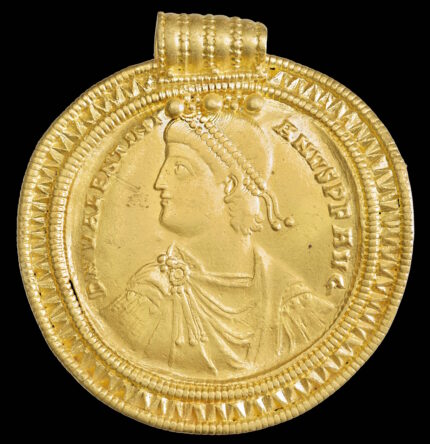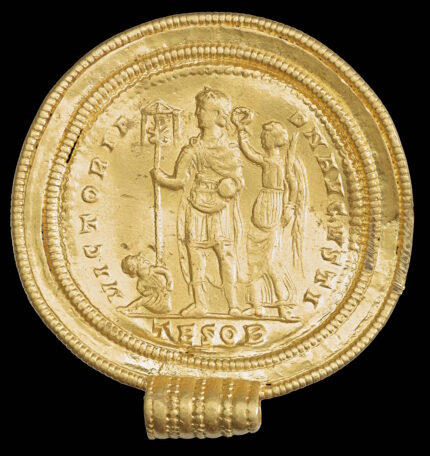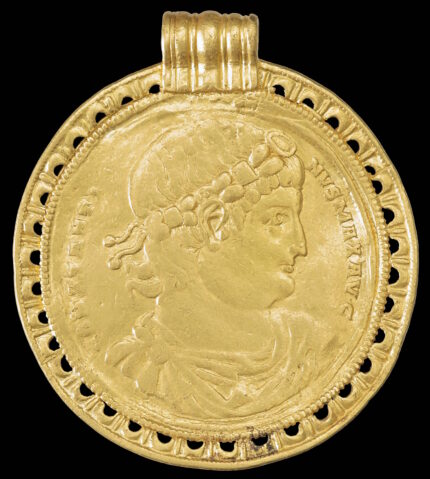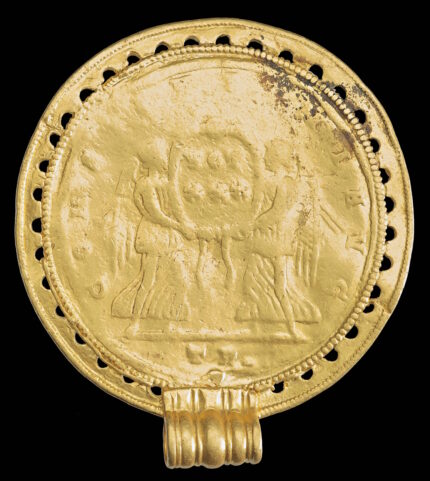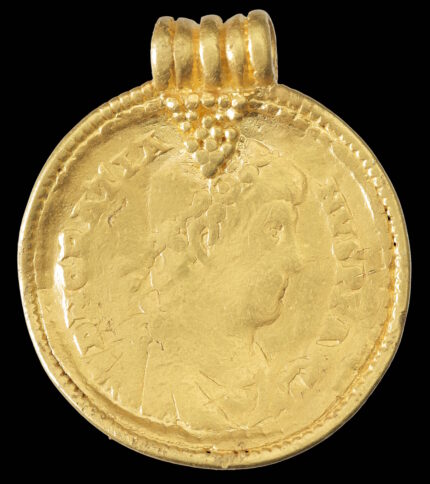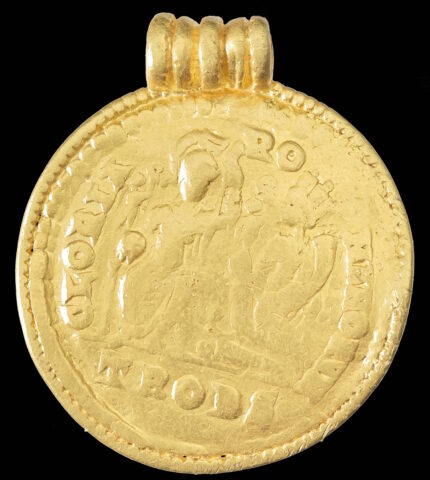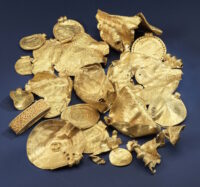 Newly published research into the Roman gold coins in the Vindelev treasure points to a strong local power in the small town in East Jutland with connections to a network of the European elite.
Newly published research into the Roman gold coins in the Vindelev treasure points to a strong local power in the small town in East Jutland with connections to a network of the European elite.
The hoard consists of 23 gold objects dating to the Migration Period (375-568 A.D.) unearthed at a farm in Vindelev outside of Jelling in South Jutland by a metal detectorist in December of 2020. There are 13 Nordic gold bracteates (thin, round gold sheets carved with figures from Norse mythology) from the 5th century A.D, including the largest bracteate in the world, and one with a runic inscription that is the earliest known mention of Odin. There is also granulated gold fitting from a sword or knife. There are four Roman gold medallions from the 4th century A.D. mounted as pendants. Four gold medallions together in a single hoard have never been found before in Denmark.
Senior researcher Helle Horsnæs, who is behind the research, has examined the four Roman medallions that are part of the treasure and can conclude that, by all accounts, the medallions were included as bride-payments or gifts in a European network of important women and men in the Roman part of Europe.
And someone from that network has therefore stayed on a farm in Vindelev, because the treasure was found there. This surprises Helle Horsnæs.
“There are other exciting gold finds in the East Jutland area, but Vindelev is just bigger on all parameters. We don’t have any signs that there was supposed to be a power base in Vindelev at this time, so it is surprising for us to find objects that not only show local power, but also European connections,” she says.
“This really puts Vindelev on the European map and places the owner at the highest European level.”
The four gold medallions were issued by four different emperors : Constantine the Great (306-337 A.D.), Constans (337-350 A.D.), Valentinian I (364-375 A.D.) and Gratian (367-383 A.D.). It is therefore extremely unlikely that they were awarded to the august personage in Vindelev. They also had loops mounted at the top by artisans outside of the Roman Empire so they could be worn as pendants, suggesting that the medallions changed hands several times before winding up at Vindelev.
One of the medallions has particularly attracted Helle Horsnæs’ attention. It turns out that it is stamped with exactly the same stamp as a medallion found in Zargozyn in Poland.
The two medallions have therefore been followed out of the Roman Empire, after which they have had rings attached in the same workshop and reworked into pendants. After that, one may have taken different detours to Zargorzyn in Poland and the other to Vindelev in Denmark.
“It shows that the European network at this time in the Iron Age was widely branched, and that the European elite were already connected to each other back then,” says Helle Horsnæs.
